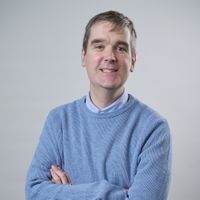13 November 1947: Mikhail Kalashnikov's AK-47 makes its debut
Russian Mikhail Kalashnikov's AK-47 assault rifle was first demonstrated to Soviet officials on this day in 1947.


The former Soviet Union's weaponry during World War II, especially its tanks, were reasonably advanced. But it struggled to produce a gun that was comparable to those used by German soldiers, especially the ground-breaking Sturmgewehr 44 (S44). The possibility that the Cold War could erupt into direct conflict at any moment meant that they needed to produce an effective design that could be mass-produced in huge numbers.
Enter Russian weapon designer Mikhail Kalashnikov, who came up with the idea of combining the look of the S44 with the American M1 rifle and incorporating features from other Soviet prototypes. The resulting AK-47 was first demonstrated to officials in November 1947.
Its combination of accuracy, reliability and firepower meant that it became the standard Red Army weapon by 1949. At the same time, its simple design meant that it was easy for even less developed countries to make in bulk. This meant that it became the weapon of choice for revolutionary movements around the world.
MoneyWeek
Subscribe to MoneyWeek today and get your first six magazine issues absolutely FREE

Sign up to Money Morning
Don't miss the latest investment and personal finances news, market analysis, plus money-saving tips with our free twice-daily newsletter
Don't miss the latest investment and personal finances news, market analysis, plus money-saving tips with our free twice-daily newsletter
It has been estimated that there are currently up to 100 million AK-47s (and variants) around the world in circulation, around 20% of the total number of guns in the world. While the average global price of an AK-47 is $500, some can be picked up for less than $100.
Kalashnikov didn't get any royalties from his design, but he tried to cash in on the weapon's notoriety by investing in a company run by his grandson that sells Kalashnikov-branded merchandise, including vodka. The official manufacturer, Izhmash, would take advantage of Russia's IP laws to patent the design in 1997, though it has had little success in enforcing this.
Get the latest financial news, insights and expert analysis from our award-winning MoneyWeek team, to help you understand what really matters when it comes to your finances.

-
 Quality emerging market companies with consistent returns
Quality emerging market companies with consistent returnsOpinion Mark Hammonds, portfolio manager at Guinness Global Investors, selects three emerging market stocks where he'd put his money
-
 UK blue chips offer investors reliable income and growth
UK blue chips offer investors reliable income and growthOpinion Ben Russon, portfolio manager and co-head UK equities, ClearBridge Investments, highlights three British blue chips where he'd put his money
-
 31 August 1957: the Federation of Malaya declares independence from the UK
31 August 1957: the Federation of Malaya declares independence from the UKFeatures On this day in 1957, after ten years of preparation, the Federation of Malaya became an independent nation.
-
 13 April 1960: the first satellite navigation system is launched
13 April 1960: the first satellite navigation system is launchedFeatures On this day in 1960, Nasa sent the Transit 1B satellite into orbit to provide positioning for the US Navy’s fleet of Polaris ballistic missile submarines.
-
 9 April 1838: National Gallery opens in Trafalgar Square
9 April 1838: National Gallery opens in Trafalgar SquareFeatures On this day in 1838, William Wilkins’ new National Gallery building in Trafalgar Square opened to the public.
-
3 March 1962: British Antarctic Territory is created
Features On this day in 1962, Britain formed the British Antarctic Territory administered from the Falkland Islands.
-
10 March 2000: the dotcom bubble peaks
Features Tech mania fanned by the dawning of the internet age inflated the dotcom bubble to maximum extent, on this day in 2000.
-
9 March 1776: Adam Smith publishes 'The Wealth of Nations'
Features On this day in 1776, Adam Smith, the “father of modern economics”, published his hugely influential book The Wealth of Nations.
-
 8 March 1817: the New York Stock Exchange is formed
8 March 1817: the New York Stock Exchange is formedFeatures On this day in 1817, a group of brokers moved out of a New York coffee house to form what would become the biggest stock exchange in the world.
-
7 March 1969: Queen Elizabeth II officially opens the Victoria Line
Features On this day in 1969, Queen Elizabeth II took only her second trip on the tube to officially open the underground’s newest line – the Victoria Line.